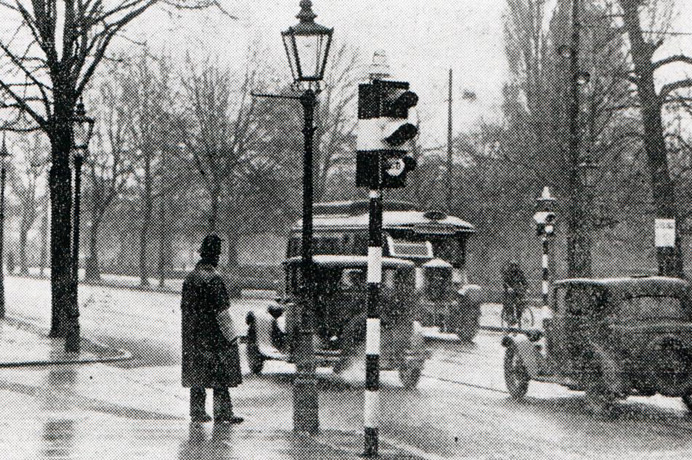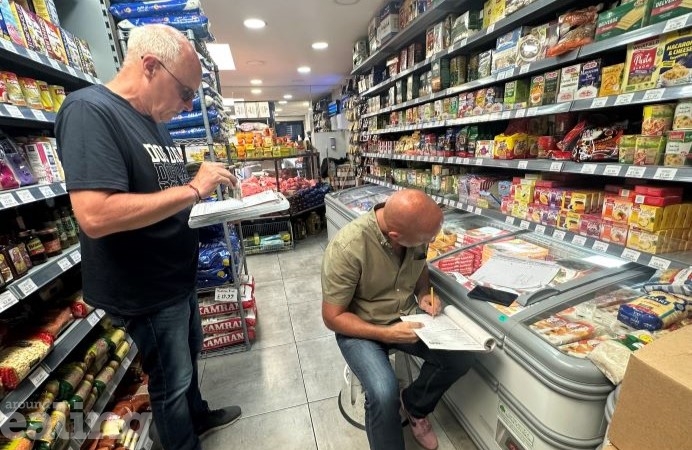Crimes of passion. Love triangles. Hiring hitmen. These are all enduring themes of films and books over the years. But all three almost came together in a true-life conspiracy in Ealing in 1939 – in a story seemingly not retold since then until Dr Jonathan Oates came across it, as he explains below.
Ealing was not a hotbed of serious crime in the 1930s, with three murders in total in that decade. However, there might have been another had the following conspiracy been successful.
The year 1939 was full of the tension of a possible impending international conflict as Hitler pushed Europe to war; and there were bombings in Britain carried out by the IRA. There was also a murderous plot unfolding in Ealing. Yet this plot has not been written about since 1939, and it is certainly a curious tale.
In 1933, Hari Bhajan Dass, aged 21, arrived in Britain from India to study aeronautical engineering.
He was described as ‘a British subject of independent means’ and was clearly from a wealthy background because his family were able to provide him with an allowance which avoided him having to work as well as study. In this he was successful and obtained the diploma as a ground engineer that he desired. In fact he obtained it in the minimum time allowed.
Yet life was not all work for Dass and he had an eventful year in 1935. He was charged in June at Ealing Magistrates’ Court with theft. He was given a lenient sentence, a fine of 20 shillings; and the crime was not even reported in the local press. More importantly, he met a young woman, Doris Landgraf. She was two years his junior and apparently it was love at first sight. They lived together as Mr and Mrs Dass, and her parents believed that they were married. Dass also considered this to be the case. The pair set up a boarding house in November 1937. Dass wanted to be married officially and, so, returned to India in the following year to seek his father’s permission.
Unbeknown to Dass, just before he left, Miss Landgraf attended a local dance on 2 July 1938 and met Herbert Finch. Once Dass was back in India, he wrote twice daily to his love and she wrote back many times to him, too. He claimed he worshipped the ground that she stood on. However, he eventually learnt the truth, that her affections had been transferred to Finch.
However, Dass was persistent. On his return to Britain in January 1939 he rented a basement flat at 35 Hartington Road, Chiswick. On contacting Miss Landgraf, she refused to see him, which horrified him. Dass rang Finch and arranged to meet him at his garage. There he told him that he and Miss Landgraf were married and that he should leave them alone. Finch replied that she was not Dass’s wife but Dass repeated that she was and told Finch stories about her. Dass saw him again but did not directly threaten him. He tried to stop Miss Landgraf from seeing Finch. On one occasion, he followed the pair in his car as they drove along the Great West Road. Finch would not give her up and continued seeing her.
It was later stated that Dass was in a pitiful condition. He cried at night and was almost penniless. He was unable to run the boarding house and the lodgers left. Half starved, he wrote pathetic letters to Miss Landgraf. He bought her a ring and clothes on credit.
On 28 February 1939, Dass went to the offices of the West London Observer and gave to the advertising manager, William Haymer, an advert to be placed in the newspaper. It was a small advert asking for ‘a clever man, with car if possible, to act as a detective. One hour’s work for a very clever person’. It duly appeared and several people answered it.
The first man to reply was a Mr Gold, who was asked to find out where Finch lived. He did so and found that Finch’s mother did not approve of her son’s romance. Dass visited the house and found a letter written by him to her. He was convinced that the two were intimate and this enraged him.
Another man who replied to the newspaper advert was Caleb Green of 35 Mill Hill Road, Acton. Dass called at his home on 22 April about the ‘small job’ he was interested in. There would be some danger in it, because it was risky. Green asked to know more. Dass asked him if he was a member of the IRA and Green replied that he was not. He then asked if he knew anything about bombs.
He explained that a man, a mechanic, was having an affair with the wife of a friend of his and he wanted that man killed. The target apparently lived in the country in a lonely place and he drove home each night in his car. They discussed the method and thought that a bomb might be best. Dass suggested that a bomb could be put in the man’s garage so that when he drove into it the bomb would go off. What he did not want was for the man to be shot. Dass also asked if Green had a gun. Green said no, but he could obtain one. Dass wanted the deed to be done by 4 May and asked if there was anyone that Green could trust to help in the operation. Green said that he had a friend in Wales who could help. The pay for the job was to be £50 in cash (a couple of month’s wages).

The two met again, this time with a man called Percy Summers. This was at 11am on 30 April at the Ealing Common traffic lights (a photo of Ealing Common in the same period can be seen on the left). Summers was actually a detective inspector and so presumably Green had had second thoughts about risking his neck as a paid assassin (the two met on the day after Green and Dass had discussed murder). Dass asked Summers if he was from Wales, and he replied that he was not and was a local man. Green assured Dass that he knew the plan already and Dass remarked, ‘There must be no mistake’.
Dass then asked about the bomb, ‘Is everything ready? Have you got the bomb?’ Green told him that it was made of nitroglycerine, which left no trace. ‘Will it go off? You hear of bombs that do not go off’ asked Dass. It would not blow up when the man opened his gate, he was told. Dass repeated that he did not want the man to be shot, ‘he must be bombed’.
Dass gave the two men the would-be victim’s address; which was Woodlands, Charville Lane, Hillingdon Heath. He drew them a rough sketch map and provided them with the details of the man’s car. Dass said ‘I will take you there and you can make your plans’. It was about eight miles away. Dass wanted the murder to be at night time and Summers suggested eight o’clock, but Dass said ‘Night time – eight o’clock is not night’.
Dass explained that he could not go there personally, ‘They know me there’. The victim lived with his parents and worked at a garage in Surrey with his brother. They left for work at eight in the morning and returned at six. Then he went out ‘with his friends’ wife’. Apparently ‘He is home on Saturday evenings and on Sundays. It is not safe for you to been seen round there. You must be extra careful’. The man was described as being 25 years old, tall, thin and good looking.
Dass stressed that nothing must happen before Thursday 4 May, because they had to wait until his friend (the imaginary husband of the woman Finch was said to be seeing) was out of the country. He added, ‘There will be a big inquiry and it will be in all the papers. He will be questioned and his wife will suspect him, but if he is not here when it happens it will be all right. He will write to his wife and say “As you will not come back to me I am going away”’.
There was then another meeting on the Common arranged for the three of them; 2 May. Then Dass would pay £25 before the work and the balance in four days’ time when the job was done. Dass said ‘You must trust me and I must trust you’.
However, at nine o’clock on the night of 2 May, Dass was sitting in his car in Grange Road. Summer, with two detective sergeants, drove up nearby. Summer got out and opened the offside door of Dass’s car. He told him, ‘We are police officers, and I am going to arrest you’. Dass replied ‘Why?’ Summer told him, ‘You will be charged with trying to incite this man here – Green – to murder a man named Finch’. They all went to Ealing Police Station where Dass was officially charged, ‘I say it is all wrong’ he stated.
Dass was brought before Ealing Magistrates’ court, where he was charged with soliciting, encouraging and endeavouring to make Green and Summers murder Finch and was remanded in custody. Bail was not granted. Green was asked whether he had ever been a detective and he said no. He also agreed that he had led Dass to believe he would kill for him. Meanwhile, a detective sergeant went to Dass’s home and found letters.
The case went to the Old Bailey on 27 June. Dass pleaded not guilty. Leading the case for the defence was Christmas Humphreys, son of Sir Travers Humphreys, a well-known judge and Ealing resident. He stressed that Dass was hardworking and had been much in love with Miss Landgraf. He said that Dass’s father was unwell as a result of what had happened. The India Office was glad to provide Dass with passage back to India. The judge asked Humphreys, ‘The girl does not want him?’ and he replied, ‘I think she is more content with Mr Finch’. He was bound over for three years and would have to return to India. However, he was last noted in 1947 as living in Nasmyth Road, Hammersmith, and married to another woman.
Herbert Finch and Doris Landgraf also married and had a long life together.







